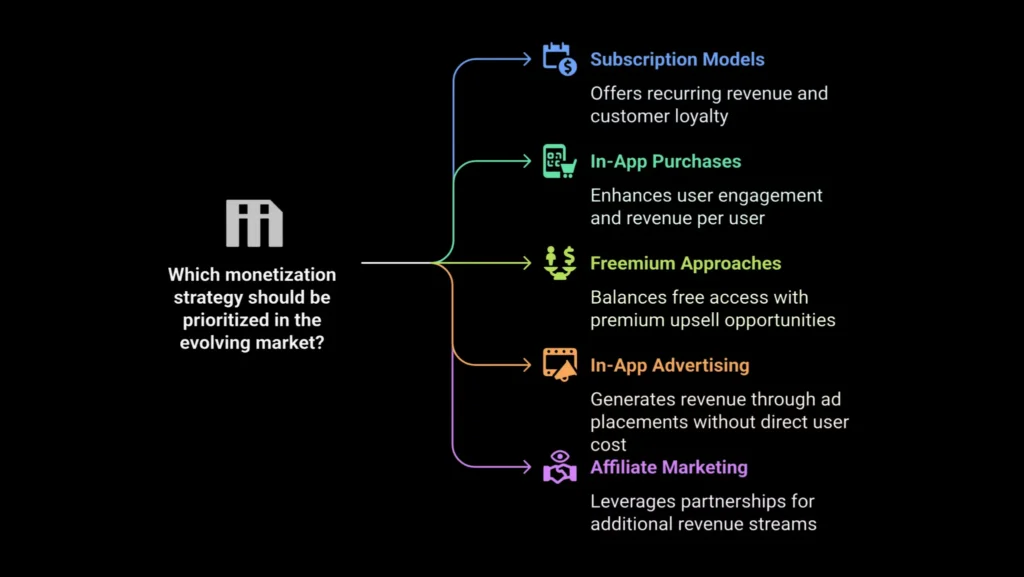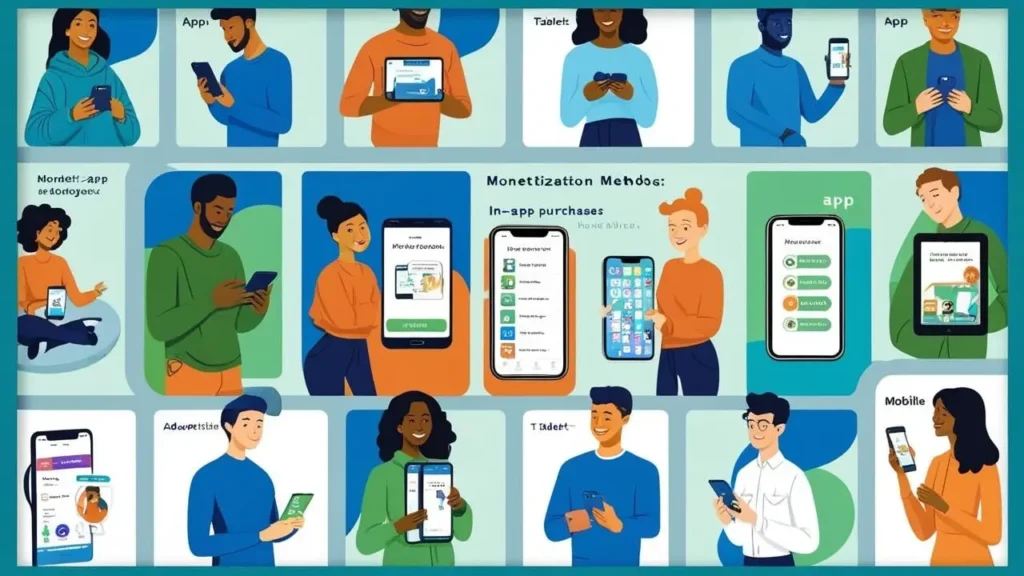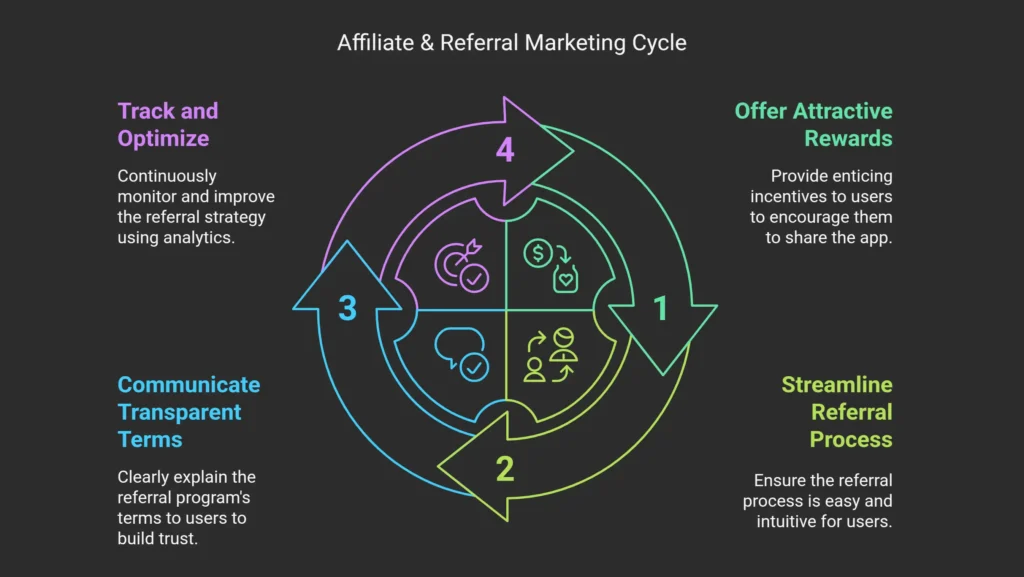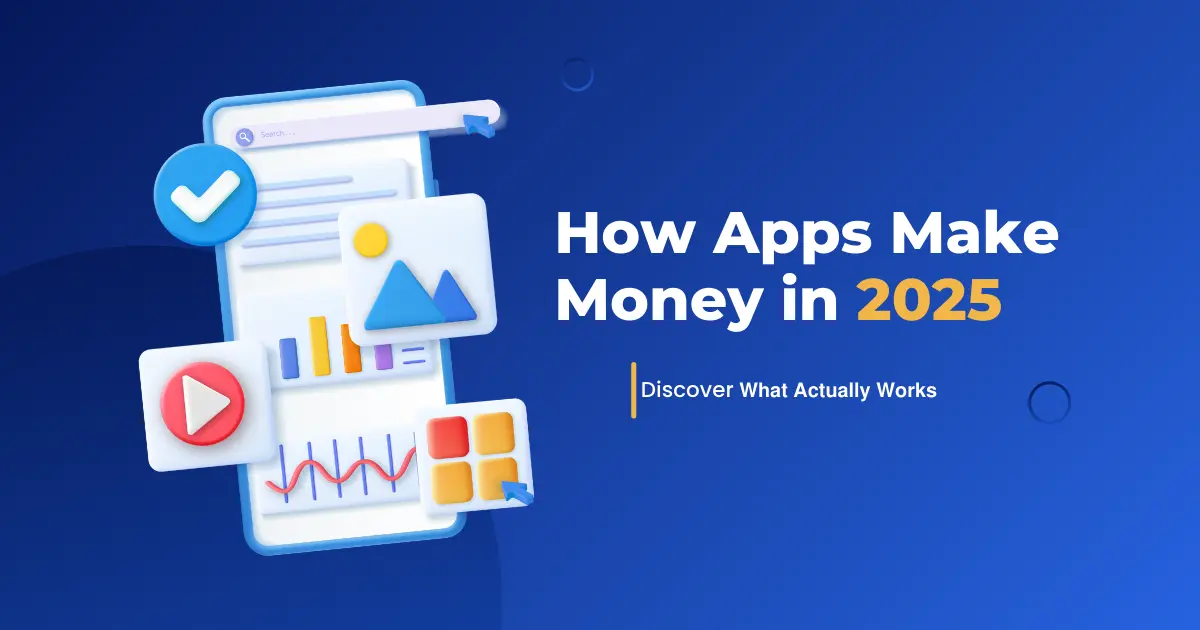How Apps Make Money? Mobile app monetization in 2025 isn’t just evolving—it’s undergoing a major transformation. In an era where traditional revenue models blend seamlessly with cutting-edge technologies, app developers find themselves at a pivotal crossroads. The rapid integration of AI-driven personalization, blockchain security, and hyper-localized strategies is reshaping how apps generate income.
In this article i’ll explore how subscription models, in-app purchases, freemium approaches, in-app advertising, and affiliate marketing are being reimagined in this new era. By breaking down each method and highlighting emerging trends, we’ll provide you with actionable insights to help navigate and capitalize on this rapidly changing market.

1. The Cornerstones of Mobile App Monetization
I. Subscription Model
Subscriptions are all about consistent, recurring revenue. For SaaS and content-driven apps, this model works by offering users continuous, premium value—think exclusive features, regularly updated content, and tailored experiences. Apps like Netflix, Spotify, and Duolingo have nailed this approach by ensuring that every subscription feels like an investment in ongoing quality and convenience.
Examples & Case Studies
- Netflix & Spotify: These platforms maintain a strong retention rate by continually updating their content libraries and providing personalized recommendations.
- Duolingo: By blending education with gamification, it turns language learning into an engaging, habit-forming journey that users are eager to subscribe to.
Key Considerations
The success of the subscription model hinges on the promise of continuous value. Keeping users engaged through regular updates and personalized content is crucial, as it not only drives retention but also solidifies the app’s reputation for quality over time.
II. In-App Purchases
In-app purchases rely on the psychology of microtransactions. By offering small, incremental enhancements – be it in-game currency, exclusive virtual items, or feature upgrades – apps can tap into users’ desire for improved experiences without a hefty upfront cost.
Successful Examples
Apps like PUBG and Clash of Clans have built entire ecosystems around microtransactions. These titles drive revenue by letting users buy cosmetic upgrades, power-ups, or extra lives, creating a win-win where players enjoy added value while developers secure a steady revenue stream.
User Value & Experience
The beauty of in-app purchases lies in their ability to enhance the user experience. When executed well, these microtransactions make gameplay or app interactions more engaging by providing unique, exclusive content that feels worth every penny.

III. Freemium Model
The freemium approach offers users a free, fully functional version of an app with basic features, while premium add-ons or advanced functionalities are available for purchase. This model lets users experience the core value of the app without commitment, creating an inviting entry point.
Adoption & Conversion
Apps like Notion, Trello, and Zoom have successfully adopted the freemium model. They attract a large user base by offering essential features for free, then convert a percentage of these users into paying customers by offering enhanced features, increased storage, or advanced integrations[3][4].
Strategic Benefits
The freemium model drives revenue through mass adoption. By lowering the entry barrier, it allows the app to build a vast user community. Over time, as users engage with the app, a segment naturally opts for the premium features, creating a reliable revenue stream while ensuring high user engagement.
IV. In-App Advertising
Modern in-app advertising is designed to integrate seamlessly with the user experience. Rewarded ads offer users incentives—like bonus content or virtual currency—while native ads are carefully embedded within the app’s content. These formats ensure that advertisements enhance rather than interrupt the user journey.
Also in this model users should adopt Ad mediation (in app bidding) where multiple ad networks are bidding for your inventory, the network with the highest cpm wins the bid and is shown in your ad space.
Revenue Potential
In-app advertising holds strong revenue potential, especially for apps with significant traffic. By partnering with ad networks such as AdMob and leveraging high CPM ad formats, apps can generate substantial income. The key is balancing ad placements to maintain a smooth user experience while optimizing revenue opportunities.
V. Affiliate & Referral Marketing
Affiliate and referral marketing tap into the power of social proof and word-of-mouth. By offering incentives—such as discounts, cashback, or bonus credits—users are motivated to invite friends and family to try the app. This strategy not only boosts user acquisition but also creates a sense of community, as every referral translates into a mutual reward.
Industry Examples
Industry giants like Amazon, Paytm, and CashApp have perfected the art of referral incentives. These platforms use well-structured reward systems to drive rapid growth. For instance, Amazon often offers gift cards or discounts to users who refer new customers, while Paytm and CashApp provide instant cash bonuses or credit to encourage user referrals[6].
Implementation Tips
- Make Rewards Attractive: Ensure the referral incentives are appealing enough to prompt users to share the app.
- Streamline the Process: The referral mechanism should be intuitive and frictionless, with clear calls-to-action.
- Transparent Terms: Clearly communicate how the referral program works to build trust and encourage participation.
- Track and Optimize: Use robust analytics to monitor referral success and continuously optimize the rewards and user experience.

2. Hybrid & Integrated Strategies
In 2025, blending multiple monetization strategies is more than a trend—it’s a necessity. Developers are increasingly mixing subscriptions, in-app purchases, advertising, and gamification to create diversified revenue streams. This hybrid approach allows apps to capture value from various segments of their user base, ensuring no single market shift can derail overall profitability.
Real-World Applications
Many leading apps are now leveraging this integrated approach. For example, some gaming platforms combine in-app purchases with rewarded ads and subscription-based premium content. Similarly, productivity apps may offer a freemium core, enhanced with subscription tiers and subtle in-app advertising, ensuring that each revenue stream complements the others while catering to different user preferences.
Advantages
- Flexibility: A multi-model strategy caters to a broader audience by appealing to both premium users and those who prefer free or ad-supported experiences.
- Revenue Stability: Diversifying revenue sources minimizes risks associated with market fluctuations, ensuring a steadier income flow.
- Enhanced Engagement: By offering various monetization options, apps can better meet diverse user needs, driving higher engagement and retention.
- Adaptability: This approach allows developers to pivot quickly in response to changing market dynamics, integrating emerging trends such as AI-driven personalization or gamification elements seamlessly.
3. Emerging Trends Shaping 2025
AI-Driven Personalization
Artificial intelligence is revolutionizing how apps engage with their users. By analyzing vast amounts of data, AI can optimize ad placements in real time, predict user behavior, and tailor content to individual preferences. This not only improves the overall user experience but also boosts monetization efficiency by ensuring that every ad and feature is perfectly aligned with what users want to see.
Blockchain & NFTs
Blockchain technology is making its mark on mobile app monetization by enabling secure, transparent transactions. In gaming, for example, NFTs are being integrated to provide players with unique, tradeable digital assets. This approach not only secures in-app purchases but also adds an entirely new layer of value and engagement for users.
Localization & Organic Growth
In 2025, one-size-fits-all strategies are giving way to tailored approaches. Apps are increasingly customizing monetization strategies to suit regional preferences. By fine-tuning pricing, content, and advertising to match local cultures and market dynamics, developers can drive organic growth. Leveraging SEO and localized content also plays a key role in building sustainable user bases.
4. Conclusion
We’ve seen how apps make money. The subscription model ensures steady, recurring revenue through continuous value, while in-app purchases and freemium models drive engagement and conversion through accessible entry points. In-app advertising and affiliate/referral marketing further diversify revenue streams, creating a robust and adaptable ecosystem.
FAQ
1. What are the most popular monetization strategies for mobile apps in 2025?
Mobile app monetization in 2025 predominantly revolves around subscription models, in-app purchases, freemium approaches, in-app advertising, and affiliate/referral marketing. Each strategy caters to different user segments and helps generate multiple revenue streams for sustainable growth.
2. How does AI-driven personalization enhance monetization?
AI-driven personalization optimizes ad placements, predicts user behavior, and tailors content to individual preferences. This results in a more engaging user experience, higher conversion rates, and increased revenue by ensuring that every interaction is highly relevant to the user.
3. What role do blockchain and NFTs play in mobile app monetization?
Blockchain technology is being integrated to provide secure, transparent transactions. In gaming, NFTs offer unique digital assets that players can trade or collect, adding an extra layer of value and engagement that enhances both user experience and monetization potential.
4. How can developers balance in-app advertising with user experience?
The key is integrating ads in a way that feels natural rather than intrusive. Effective formats like rewarded ads and native ads are designed to blend into the app’s content, ensuring users receive value (such as bonus content or in-app currency) while developers still capture revenue from high-traffic segments.
5. Which monetization strategy is best for my app?
The ideal strategy depends on your app’s niche, user behavior, and overall business goals. For example, content-driven apps may benefit from subscriptions, while gaming apps often see success with in-app purchases and ads. In many cases, a hybrid approach that combines multiple models can maximize revenue while catering to diverse user preferences.
Feel free to reach out if you have any more questions about mobile app monetization!
